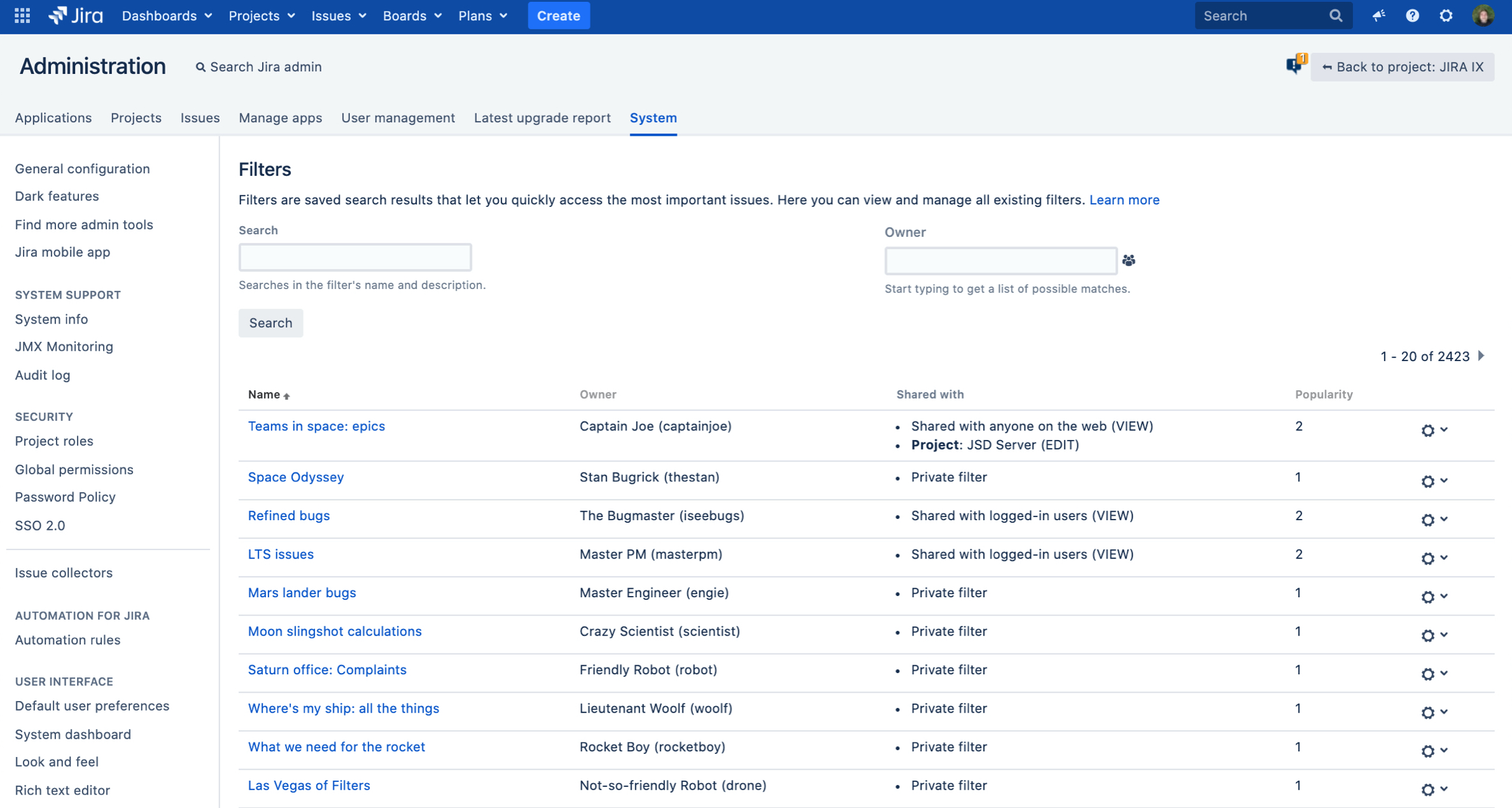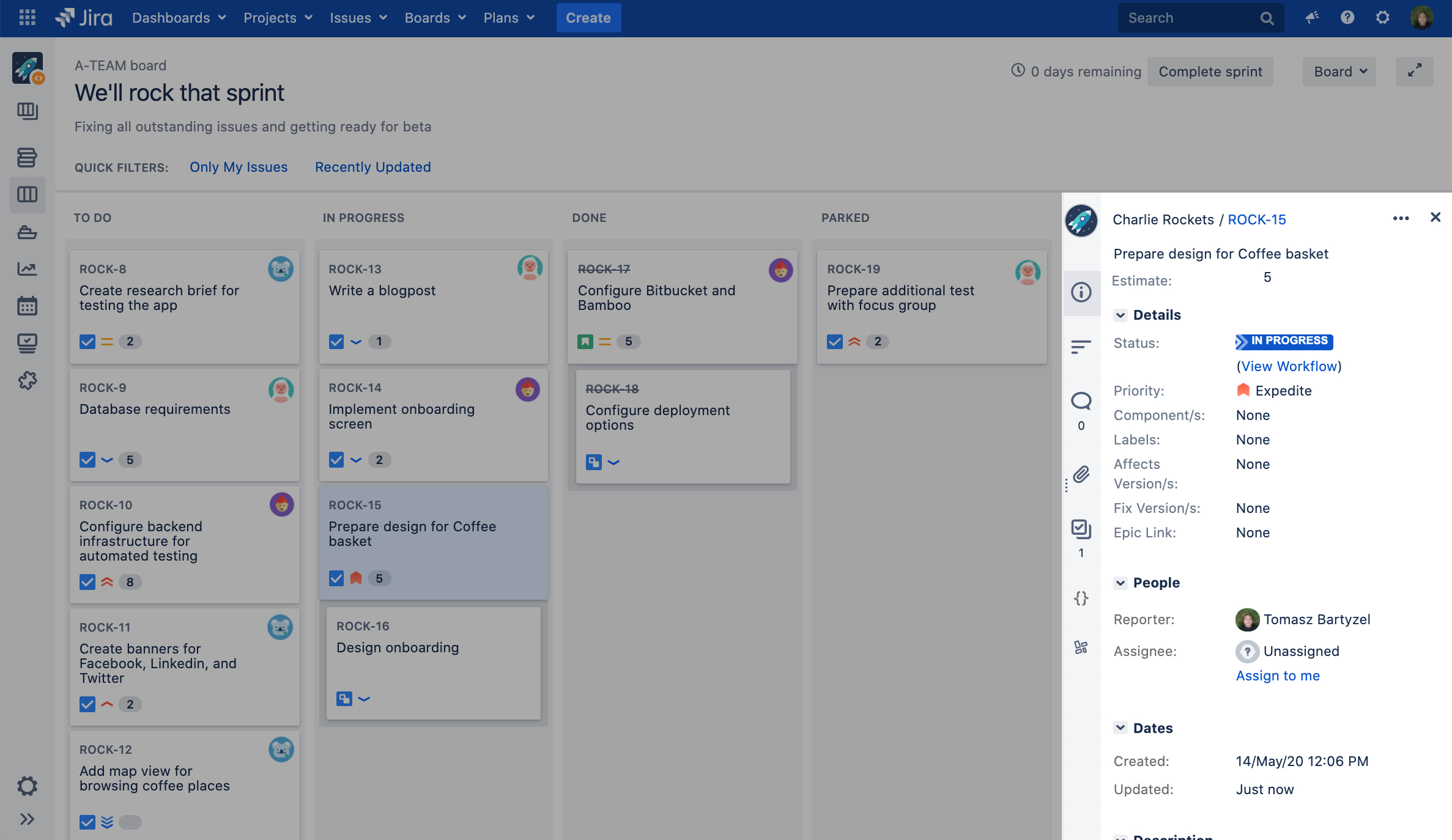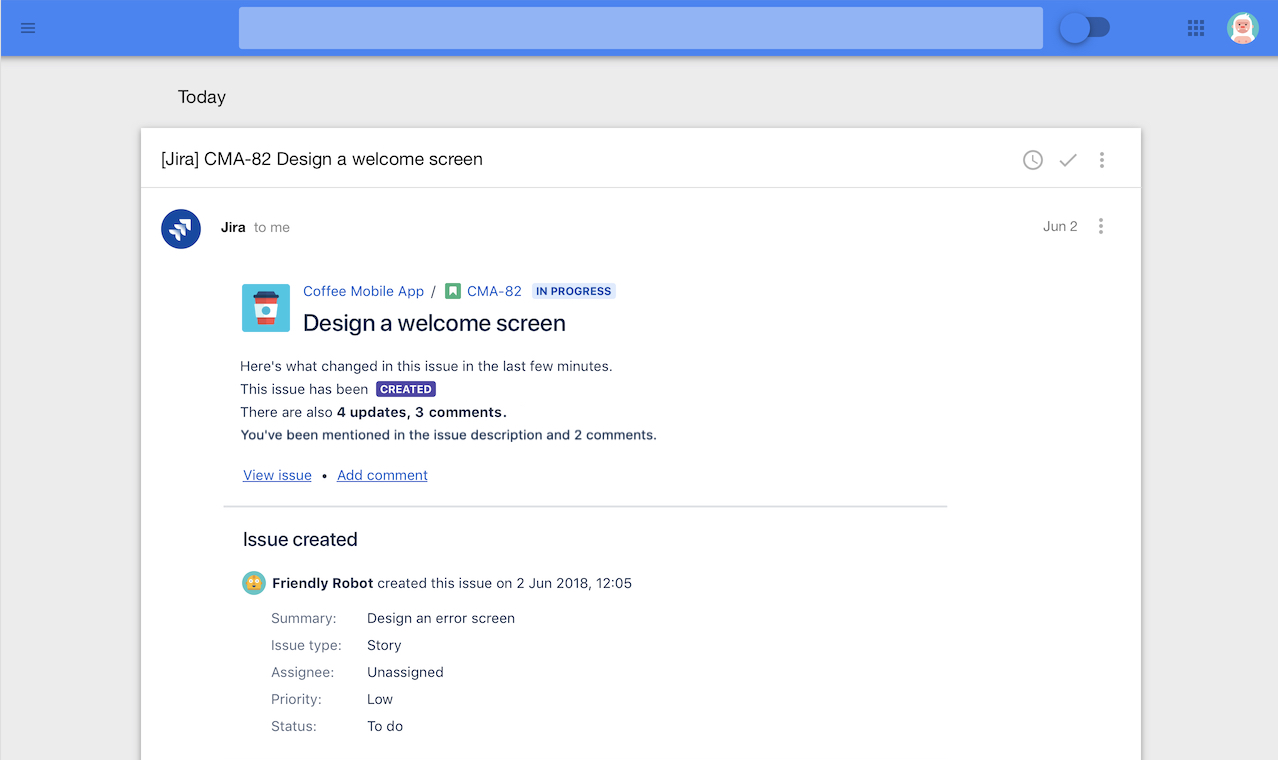Jira Software 8.11.x release notes
15 July 2020
We're pleased to present Jira Software 8.11.
Highlights
Interested in trying a shiny new version? Don't forget to renew your active software maintenance! Renew now.
If you're looking for compatible Jira applications, look no further:
If you're thinking to move to Data Center, check our recommendations first. See: Infrastructure recommendations for Jira.
Our Jira Pro Tip for this release
Do you know you can easily check which fields take longest to index and take action? Learn more...
Managing private filters and dashboards
It’s time to flex those admin muscles, because we’re giving Jira admins the power to edit and delete private filters and dashboards. Now, you can see all existing filters and dashboards—whether shared or private—and choose how to handle them.
Perhaps the search criteria aren’t too efficient or a dashboard is filled with some risky gadgets? You can improve them yourself, assign to somebody else, or just delete and watch how they disappear in a puff of admin magic. You’re in control now, so we’ll leave it all up to you. Don’t let erroneous dashboards and filters slow down your instance. Learn more
Issue detail view is now optional
We’re quite dynamic when planning our sprints and often jump between the issues on the list or reshuffle them as we see fit. For some of us, the noisy detail view popping up here and there is a hurdle, and sometimes we just wish it was gone.
Your wish is granted, now, you can choose to hide the detail view and quickly enable it back whenever you need it. You can do it with just two clicks of a button—on your favorite board, select Board > Hide detail view. Happy planning!
Improved email notifications about mentions
Back in Jira 8.0, we’ve introduced batched email notifications that decreased the number of emails you’re getting from Jira, making it less chatty. Despite that, we got a lot of feedback saying that you’re still getting heaps of separate emails with mentions.
Now, mentions will be included together with other issue updates in the summary email, but they will trigger this email to be sent as soon as possible. When someone mentions you on an issue, they usually need your immediate attention, so we don’t want to keep them waiting. Learn more
Embedded Crowd upgrade
Embedded Crowd is a library used in Jira for user management, and we’ve just upgraded it to the latest and greatest—version 4.0. Although the pages related to users and groups rely on this library, we’ve made sure that the user interface and the interactions you need remain the same. The new version brings a number of improvements, some of which are:
Performance improvements
Clustering support
Improved directory failover
Many bugs and suggestions resolved
If you’d like to learn more about it and see the list of fixed issues, head to our upgrade notes.
More stability in the Favorite Filters gadget
Any fans of the Favorite Filters gadget? It’s one of the most popular gadgets, as it displays a list of your favorited filters and the number of issues each of them contains. For large filters, counting all of the issues can impact performance, so we wanted to give Jira admins more control.
To let you sleep easy at night, we’ve added a global setting that lets you control the max timeout for this gadget. If the issues take too long to load, we’ll stop counting them and instead display a “Too many issues” message. For all gadgets, on all dashboards. Learn more
Restricting sprint selection
To help you add issues to the correct sprint when creating or editing an issue, we are enabling an admin option to restrict the sprint selection (available in the Sprint drop-down) only to the sprints belonging to the project users select. This will limit the possibility of linking issues to the wrong sprint.
With Relevant sprints selected, you only see the sprints that belong to the project you select on the page. To see sprints that aren’t linked to any project you can select Show all to have all sprints display.
Configure how fast stale nodes are moved offline DATA CENTER
In Jira 8.10 we made it possible for stale nodes in your cluster to be automatically moved offline after two days of reporting no heartbeat. Now, you can configure this timeframe and move stale nodes offline as quick as 3 hours by modifying the jira.not.alive.active.nodes.retention.period.in.hours system property. Learn more
Resolved issues
Issues resolved in 8.11.0
Released on 15 July 2020
Issues resolved in 8.11.1
Released on 18 August 2020








